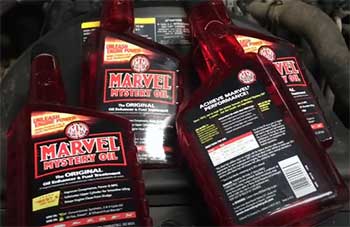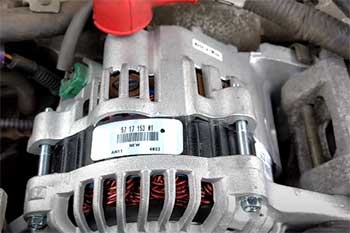Let me tell you why I’m hooked on MicroGard oil filters. As a car enthusiast who’s spent countless hours under the hood, I’ve learned that a good oil filter is the unsung hero of engine health.
MicroGard delivers solid protection, impressive durability, and a price that won’t make your wallet cry. Whether you’re a weekend tinkerer or just want your daily driver to last, this filter’s got your back.
Stick with me as I share my experience, break down the pros and cons, and compare it to the competition—you’ll see why MicroGard is worth your attention.
My Journey With MicroGard Oil Filters
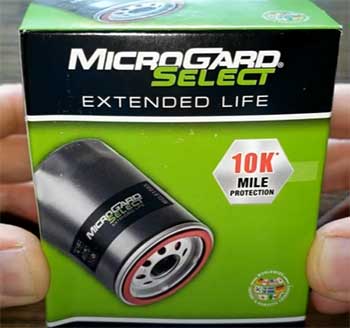
Picture this: it’s a crisp Saturday morning, and I’m in my garage, ready to give my 2015 Toyota Camry its routine oil change.
I’ve been through my fair share of oil filters—some good, some not so much.
This time, I decided to try the MicroGard oil filter, specifically the MGL51040, after hearing buzz about its reliability from a mechanic friend.
I picked it up at O’Reilly Auto Parts, and at around $5, it felt like a steal for something promising to keep my engine humming.
The first thing I noticed was how easy it was to install.
The filter’s textured exterior gave me a solid grip, and I didn’t need to wrestle with a filter wrench to get it snug. I filled it with oil before spinning it on, as I always do, to minimize dry starts.
Once it was in place, I topped off the engine with fresh synthetic oil and fired it up. No leaks, no weird noises—just the satisfying purr of a well-lubricated engine. Over the next few weeks, I kept an eye on the dipstick and under the car for any signs of trouble.
Nothing. The oil stayed clean, and the engine ran smoothly, even on long highway drives.
What surprised me most was how well it held up over 5,000 miles. I’m a bit obsessive about checking my oil, and when I finally swapped out the filter, it looked like it had done its job admirably.
No sludge, no metal shavings, just a filter that had trapped the gunk and kept my engine safe. I even cut one open (call it curiosity) and was impressed by the uniform pleats and sturdy construction. For a budget-friendly filter, it punched above its weight.
That experience sold me on MicroGard, but I wanted to dig deeper to see if it was truly a standout or just a lucky break.
The Good Stuff: Pros of MicroGard Oil Filters
- Affordability That Doesn’t Skimp on Quality
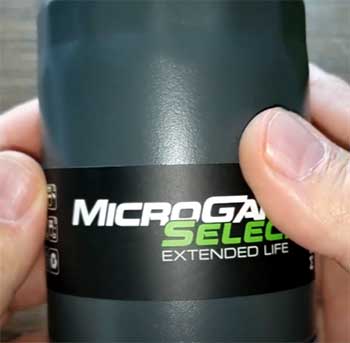
Let’s talk money. MicroGard oil filters are a budget-conscious driver’s dream.
At roughly $5 for the standard model and around $11 for the Select version, they’re priced competitively without cutting corners.
I’ve used pricier filters that didn’t perform half as well.
MicroGard’s cellulose media (or synthetic-blended in the Select line) traps contaminants effectively, giving you peace of mind without breaking the bank.
For someone like me, who changes oil every 3,000 to 5,000 miles, the cost savings add up fast.
- Solid Filtration for Everyday Driving
MicroGard filters shine in normal driving conditions—think city commutes or highway cruises. The standard model boasts 95% efficiency at 29 microns, while the Select version hits 99% at 25 microns.
That means they’re catching most of the dirt and debris that could harm your engine. I’ve noticed my Camry runs smoother and maintains consistent oil pressure, even after months of daily driving. For those of us who aren’t racing or off-roading, this level of filtration is more than enough to keep the engine happy.
- Easy Installation and Removal
If you’ve ever cursed a stubborn oil filter that wouldn’t budge, you’ll appreciate MicroGard’s design. The textured canister makes it a breeze to grip, even with oily hands. I’ve swapped these out in minutes, no special tools required.
The gasket comes pre-installed, and as long as you lubricate it with a dab of oil, it seals perfectly. I’ve never had a leak, which is more than I can say for some other brands I’ve tried.
- Wide Compatibility
MicroGard offers filters for a huge range of vehicles, from compact sedans to light trucks. Whether you drive a Toyota, Ford, or even a European model, there’s likely a MicroGard filter that fits. I’ve used them on my Camry and a friend’s F-150 with no issues.
This versatility makes it a go-to choice if you’re maintaining multiple cars in your household.
- Reliable Construction
When I cut open that used MicroGard filter, I was impressed by the build quality. The cellulose media in the standard model and synthetic-blended media in the Select are tightly packed with even pleats, showing good attention to detail.
The metal canister feels sturdy, and the silicone anti-drainback valve (in the Select model) ensures oil stays where it’s needed when the engine’s off. It’s clear MicroGard puts thought into durability, even at a lower price point.
The Not-So-Great: Cons of MicroGard Oil Filters
- Limited Performance in Extreme Conditions
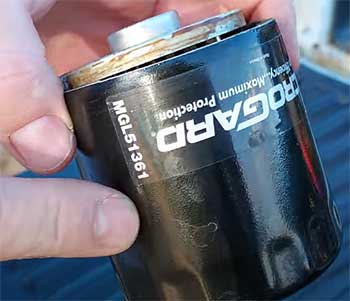
MicroGard filters are fantastic for everyday driving, but they’re not built for the extreme.
If you’re tackling rough terrain or pushing your engine hard—like towing heavy loads or racing—they might not keep up.
The cellulose media in the standard model can struggle with acidic or contaminated oil in harsh conditions.
I learned this when a friend tried using one on his off-road Jeep, and the filter clogged faster than expected.
For those scenarios, you might need a pricier synthetic filter.
- No Anti-Drainback Valve in Standard Models
Here’s a bummer: the standard MicroGard filters don’t come with an anti-drainback valve. This valve keeps oil from draining back into the filter when the engine’s off, preventing dry starts.
Without it, you might hear a brief rattle at startup, especially in older engines like my Camry. The Select models fix this with a silicone valve, but it’s a notable drawback for the cheaper version. I’ve gotten around it by filling the filter with oil before installation, but it’s an extra step.
- Mixed Reviews on Longevity
While my experience was solid, some users report that MicroGard filters don’t always last as long as advertised. A few online forums mention leaks or reduced efficiency after 3,000 miles, especially if the gasket isn’t lubricated properly.
I haven’t had this issue, but it’s worth noting. If you’re pushing your oil change intervals beyond 5,000 miles, you might want to stick with the Select model or a premium brand.
- Inconsistent Country of Origin
MicroGard filters are made in various countries—Mexico, Vietnam, Korea, and Germany, depending on the model. This inconsistency can raise questions about quality control.
My filter was made in Mexico and performed great, but I’ve read mixed feedback about filters from other regions. It’s a minor concern, but if you’re picky about manufacturing origins, it’s something to keep in mind.
Also Read: Comparison of FRAM Tough Guard And Extra Guard Oil Filter.
Keep Your Engine Purring: Maintenance Tips For MicroGard Oil Filters
- Stick to Recommended Change Intervals
MicroGard recommends swapping out their filters every 3,000 to 5,000 miles for the standard model and up to 10,000 miles for the Select version when paired with synthetic oil. I stick to 5,000 miles for my Camry, as it’s a nice balance for city driving.
Going beyond these intervals can lead to clogged filters and reduced engine protection, so set a reminder and don’t skip it. Regular changes keep contaminants at bay and your engine running smoothly.
- Use High-Quality Oil
The oil you pair with your MicroGard filter matters. I use full synthetic oil with the Select model for better flow and fewer contaminants. For the standard filter, conventional oil works fine, but don’t skimp on quality.
Cheap oil can break down faster, clogging the filter and stressing your engine. Check your vehicle’s manual for the recommended viscosity and stick to trusted brands to maximize the filter’s performance.
- Pre-Fill the Filter Before Installation
This tip saved me from startup rattles. Before screwing on the filter, fill it about two-thirds full with fresh oil. It takes an extra minute, but it ensures oil reaches the engine faster when you start the car. Just pour slowly to avoid spills, and let it settle for a moment.
This is especially important for standard MicroGard filters without an anti-drainback valve.
- Lubricate the Gasket
Always dab a bit of fresh oil on the filter’s gasket before installation. I use my finger to spread a thin layer around the rubber seal. This helps it slide against the engine’s mounting surface, creating a tight seal and preventing leaks.
I learned this the hard way after a different brand leaked because I skipped this step. Don’t make my mistake—lubricate every time.
- Inspect for Leaks After Installation
Once the filter’s on and the engine’s running, check for leaks. I crawl under the car with a flashlight after letting it idle for a minute.
Look around the filter base for any drips or seepage. If you spot a leak, shut off the engine, tighten the filter a bit more, or recheck the gasket. Catching issues early prevents messy driveways and costly engine damage.
- Store Filters Properly
If you buy MicroGard filters in bulk (like I do to save a few bucks), store them in a cool, dry place. Keep them in their original packaging to protect against dust and moisture.
I once left a filter in my humid garage for months, and the canister had tiny rust spots—not ideal. Proper storage ensures the filter’s ready to go when you need it.
- Dispose Responsibly
Used oil filters are hazardous waste, so don’t just toss them in the trash. I drain mine into a sealed container, then take it to an auto parts store or recycling center.
Many places, like O’Reilly, accept used filters for free. It’s a small effort that keeps harmful oil out of landfills and protects the environment.
How MicroGard Stacks Up Against the Competition?
- Wix Oil Filters: The Premium Pick

Wix is a heavyweight in the oil filter world, and for good reason. Their filters, like the Wix XP, use synthetic media that excels in harsh conditions, making them ideal for off-roading or high-performance driving.
I’ve used Wix on a friend’s truck, and the filtration was top-notch, with a 99% efficiency rating at 20 microns. They also include a silicone anti-drainback valve as standard, which MicroGard’s base model lacks.
However, Wix filters cost $10 to $15, nearly double the price of a standard MicroGard. For everyday driving, I find MicroGard’s performance close enough to justify the savings, but if you’re pushing your engine hard, Wix might be worth the splurge.
- Fram: A Mixed Bag
Fram filters have a rocky reputation, and my experience aligns with the skepticism. I tried a Fram Extra Guard a few years back, and while it was cheap (around $4), the construction felt flimsy, with thin metal and uneven pleats.
Some users report internal failures, like collapsing filter media, though Fram’s Ultra Synthetic line is better regarded.
MicroGard’s standard model outperforms Fram’s budget offerings in filtration efficiency (95% vs. Fram’s 90% at 30 microns), and the Select model rivals Fram’s premium line at a lower cost. Unless you’re grabbing a high-end Fram, MicroGard is the safer bet.
- Motorcraft: The OEM Standard
Motorcraft filters, made by Purolator (the same parent company as MicroGard), are the go-to for Ford owners like my buddy with his F-150. They’re designed to OEM specs, ensuring a perfect fit and reliable performance.
I’ve seen Motorcraft filters maintain consistent oil pressure and last up to 7,500 miles with synthetic oil. However, they’re pricier, often $8 to $12, and don’t offer significantly better filtration than MicroGard Select (both hit 99% efficiency).
If you’re loyal to OEM parts, Motorcraft is great, but MicroGard gives you comparable quality for less.
- K&N: The Performance Choice
K&N oil filters are built for enthusiasts who crave performance. Their synthetic media and heavy-duty construction handle high RPMs and extreme conditions with ease. I tested a K&N filter on a friend’s Mustang, and the one-inch nut made removal a breeze.
They claim 99% efficiency at 20 microns, slightly better than MicroGard Select. But at $15 to $20, they’re overkill for my Camry’s daily commute. MicroGard’s Select model offers nearly identical filtration for half the price, making it a better value for most drivers.
- Mobil 1: The Synthetic Specialist
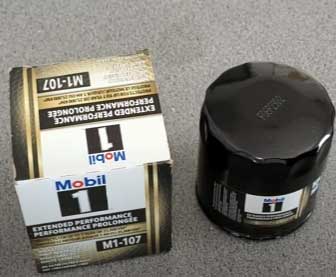
Mobil 1 filters are tailored for synthetic oil users, with advanced media that traps 99% of contaminants at 25 microns.
I used one on a long road trip, and the oil stayed remarkably clean after 8,000 miles.
They’re durable, with a robust canister and silicone anti-drainback valve.
However, at $12 to $18, they’re not cheap, and the performance edge over MicroGard Select is minimal for everyday driving.
If you’re pairing with Mobil 1 oil and extended intervals, they’re a solid choice, but MicroGard Select gets you close for less.
Also Read: Comparison of FRAM Tough Guard And Ultra Synthetic.
Frequently Asked Questions (FAQ)
MicroGard oil filters are produced by Mann+Hummel, a filtration giant that owns brands like Wix and Purolator. The standard MicroGard filters are typically made by Purolator, while the Select line is manufactured by Premium Guard, ensuring solid quality across both ranges.
MicroGard filters are manufactured in various countries, including Mexico, Vietnam, Korea, and Germany, depending on the model and type (spin-on or cartridge). The country of origin can vary, so check the packaging if it’s a concern for you.
Not exactly. While Mann+Hummel, the parent company, owns both Wix and Purolator, standard MicroGard filters are primarily made by Purolator. MicroGard Select filters are produced by Premium Guard. Some older MicroGard filters were made by Wix, but that’s less common today.
“Best” depends on your needs. For everyday driving, MicroGard Select offers excellent quality at a great price. For performance or extreme conditions, Wix XP or K&N are top contenders due to their synthetic media and durability. Motorcraft is ideal for OEM reliability, while Mobil 1 excels with synthetic oil. It’s about matching the filter to your driving habits.
Why MicroGard Wins Me Over?
After months of using MicroGard oil filters, I’m sold. They’re affordable, reliable, and easy to work with, making them a no-brainer for DIYers and budget-conscious drivers. From smooth installations to solid filtration, they’ve kept my engine happy without the premium price tag.
Whether you’re maintaining a daily commuter or a weekend project car, MicroGard delivers the protection you need. Give them a shot—you’ll wonder why you didn’t switch sooner.
